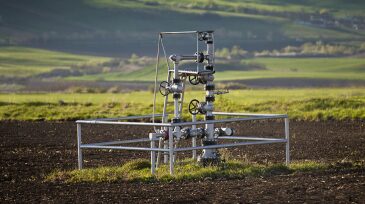-
Industry interest in US Gulf of Mexico acreage declined in the number of bids and the dollars offered at the latest federal lease sale, compared with the prior sale. But there was still some confidence shown in higher risk prospects.
-
At an initial production rate of almost 13 MMcf/D, BP’s new well has achieved the highest early-production level in 14 years for a well in the San Juan Basin of Colorado and New Mexico.
-
Senior Research Scientist and SPE Distinguished Lecturer Ian Walton uses a semianalytic shale gas production model to show that natural fractures, contrary to the intuitive beliefs of many, do not contribute significantly to production.
-
The new US sanctions against Russia will place added restrictions on international companies taking part in oil development projects with Russian companies and raise doubts about Russia’s plans to expand pipeline exports.
-
A new report notes significant shifts occurring in the E&P industry and urges oil and gas companies to increase the pace of innovation and rethink their business models.
-
More than 10,000 global industry professionals are expected to attend the SPE Annual Technical Conference and Exhibition (ATCE) from 9–11 October in San Antonio, Texas.
-
Second-quarter financial results show a modest improvement for the industry’s three largest oilfield services companies.
-
Peter Hays, a partner in mergers and acquisitions (M&A) at law firm King & Spalding, says that stabilization in the oil market has helped the industry M&A business to recover.
-
Researchers: Models Overstate Technology Impact, Understate Location Impact for Unconventional WellsTwo researchers at the MIT Energy Initiative have found that current modeling overestimates the impact of new technology on unconventional well productivity and underestimates that of increasingly targeting reservoir “sweet spots.”
-
Crude oil production in the United States is expected to approach 10 million B/D in 2018 and surpass a previous high achieved in 1970, according to the latest US EIA forecast.










